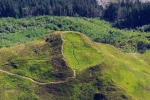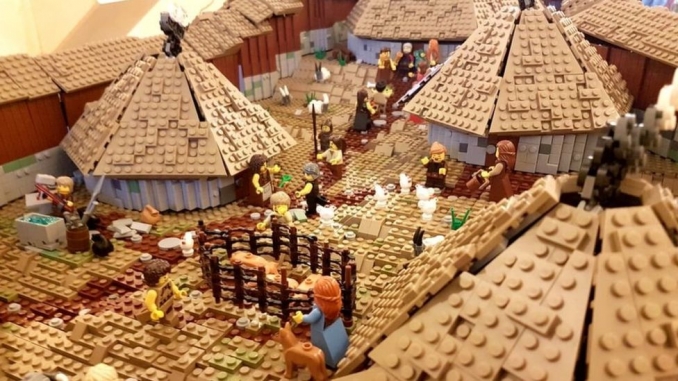Mysterious Dùn Deardail ancient Celtic Scottish hillfort recreated in lego
Brick to the Past, is a team specialising in historically-themed Lego models, Using about 35,000 pieces they have built a model of Dùn Deardail Celtic Iron Age hillfort in Scotland. It was commissioned by the Fort William-based Nevis Landscape Partnership. It was built by Dan Harris of Brick the Pastand over a period of nearly seven months. Once built it had to be disassembled into smaller sections, in order that could be then re-assembled Glen Nevis Visitor Centre.over the course of four hours.
Standing on a rocky knoll on Sgorr Chalum, the remains Dùn Deardail are above the River Nevis in Glen Nevis. Located at a height of 1,127 ft (347m) Dùn Deardail is overlooked by the mountain of Ben Nevis (Scottish Gaelic: Beinn Nibheis) and is thought to have been constructed by the Celts in the first millennium BC (1000 BC to 1BC). The fort is associated with Deirdrê of the Sorrows, the tragic heroine in Irish pre-Christian legend, whose story is told in the ancient Irish mythology of the Ulster Cycle. Deirdrê and the three sons of Usnach were said to have lived near the fort for some of the time they stayed in Scotland.
Dùn Deardail is one of a number of vitrified forts in Scotland. This is when the walls of the structure have been subjected to such intense heat that some of the stones have fused together. Vitrification has been the subject of much debate and it remains unclear why or how the walls were subjected to this process. It is known, however, that it requires very high temperatures, of around 1,000 degrees Celsius, that have to be sustained for long periods. So fires would have to be built and maintained for a number of days. Dùn Deardail has baffled those who find it difficult to explain how vitrification could work on the scale needed for this fort. It would require large amounts of fuel that would have had to be transported to the remote hilltop in the days of prehistory. The reason for doing it is also a mystery; perhaps when the fort was under prolonged attack; a possible structural component; or vitrification undertaken as a status symbol. Science fiction writer Arthur C Clarke was at a loss to explain the phenomenon and said in 2004: “The oddest thing is these vitrified forts in Scotland. I just thought, how? After all, lasers were not common in the Stone Age."







